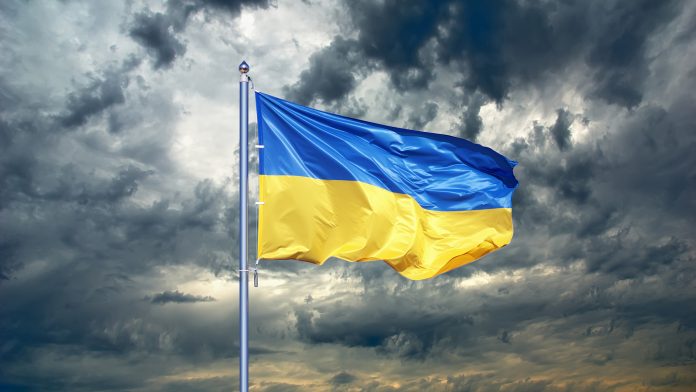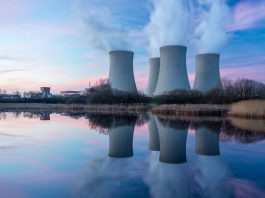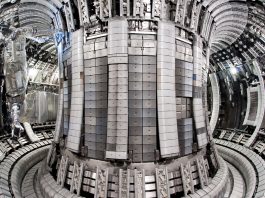The International Atomic Energy Agency delivered a large batch of vital radiation protection and monitoring equipment to Ukraine this week, which was offered by both France and Australia.
Rafael Mariano Grossi, Director General at the International Atomic Energy Agency (IAEA) explained that the shipment of personal protective equipment, radiation dosimeters and radiation and contamination monitors marked a milestone in IAEA’s efforts to ensure nuclear safety and security for Ukraine during the current military conflict. Currently, Ukraine has four operational nuclear power plants (NPPs) with 15 reactors, as well as a variety of other radiation-related facilities.
“This is a major step forward in our joint work to help Ukraine reduce the risk of a nuclear accident or a radiological emergency. I am very grateful for the generous support provided by Australia and France, as well as by many other countries that have also offered to assist,” explained Rafael Mariano Grossi, Director General. “Despite significant logistical and other hurdles, the equipment has now arrived in Ukraine where it will be put to good use by our Ukrainian counterparts.”
IAEA’s RANET: Offering capabilities for support
The IAEA has also previously assisted Ukraine with equipment during three safety, security, and safeguards missions to the country in recent months. However, this was the first shipment organised through the IAEA’s response and assistance network (RANET). This provides countries with the ability to register their capabilities for support in areas, ranging from radiation dose assessments and decontamination to nuclear installation assessment and advice, radioactive source search and recovery.
Australia and France are two of the 12 IAEA Member States that are registered in RANET, which have offered specialised equipment to Ukraine, in response to a comprehensive request for equipment the country said it required for the safe and secure operation of its nuclear facilities. Ukraine’s list included radiation measurement devices, protective equipment, computer-related assistance, power supply systems and diesel generators.
The shipment delivered this week contained more than 160 dosimeters and monitors that are essential for safety and radiation protection, as well as hundreds of items of personal protective equipment, including full body suits, masks and disposable gloves and covers. Australia provided its share of the delivery, while the IAEA obtained additional equipment with funds from France.
Addressing the necessary nuclear safety and security of Ukraine
“More safety and security-related equipment will be transported to Ukraine in the coming months, thanks to substantial support from countries offering equipment and others providing extra-budgetary contributions for our assistance. The needs are large, and I encourage other countries to also step forward with support for our crucial work in Ukraine,” said Director General Grossi.
“Together with Ukraine, we have made significant progress in identifying and beginning to address what is required for the highest possible level of safety and security at Ukraine’s nuclear facilities and activities involving radioactive sources during these unprecedented and extremely challenging times. However, a lot remains to be done. I am fully focused on doing everything possible to prevent a nuclear accident that could have severe consequences for human health and the environment in Ukraine and beyond.”
Director General Grossi emphasised the significance of the IAEA being able to travel to Zaporizhzya NPP (ZNPP) to conduct essential safety, security, and safeguard activities at Ukraine’s largest NPP. The IAEA last visited the ZNPP before the current military conflict in Ukraine began. Russian forces took control of the plant more than four months ago, however, Ukrainian staff are continuing to operate it.
Challenging conditions faced by ZNPP employees
Ukraine informed the IAEA about the extremely difficult situation at the ZNPP due to constant pressure on its employees in official communications this week.
Director General Grossi repeated the growing concern regarding the severe and challenging conditions confronting staff at the ZNPP, as well as the impact of such conditions on the safety and security of the plant. These events further underline that the IAEA’s presence is required as soon as possible.
Additionally, in relation to safeguards, the IAEA is continuing to receive remote safeguards data from the four operational NPPs, however, it is still experiencing a partial loss of safeguards data transfer from Chornobyl.
Ukraine separately informed the IAEA today – 14 July 2022 – that nine of the country’s 15 nuclear energy reactors are currently connected to the grid, including three at the ZNPP, two at the Rivne NPP, two at the South Ukraine NPP, and two at the Khmelnytskyy NPP. The other reactors are shut down for regular maintenance or held in reserve. Safety systems remain operational at the four NPPs, and they also continue to have off-site power available.









